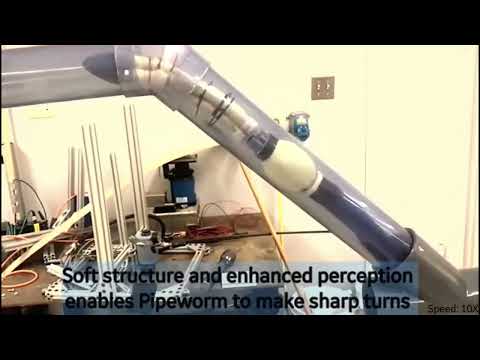
3-10 #LockedDown : TSMC allegedly plans a 10-20% price hike for its 8” foundry services; OPPO and vivo would have 2 more foldable phones; Samsung will reportedly not ship A13 5G and A03s with a charger inbox in the U.S.; etc.

After dropping 2% in 2019, the foundry market logged a strong 21% rebound in 2020 as application processor and other telecom device sales into 5G smartphones acted as strong drivers. The foundry market continued its growth surge in 2021, registering a 26% jump. If IC Insights’ 20% increase now forecast for the foundry market in 2022 comes to fruition, the 2020-2022 time period would mark the strongest three-year growth span for the total foundry market since 2002-2004. Before 2019, the foundry market last declined in 2009 (-11%). IC Insights does not expect another pure-play foundry market decline over the next five years. It is interesting to note that in the past 18 years (2004-2021), the pure-play foundry market grew 9% or less in nine of those years and by double-digit rates in the other nine years (40% in 2004, 20% in 2006, 43% in 2010, 16% in 2012, 14% in 2013, 13% in 2014, 11% in 2016, 21% in 2020, and 26% in 2021). It appears that, over the past 18 years, it has been either boom or bust (or at least moderate growth) for the IC foundry market.(Laoyaoba, IC Insights)
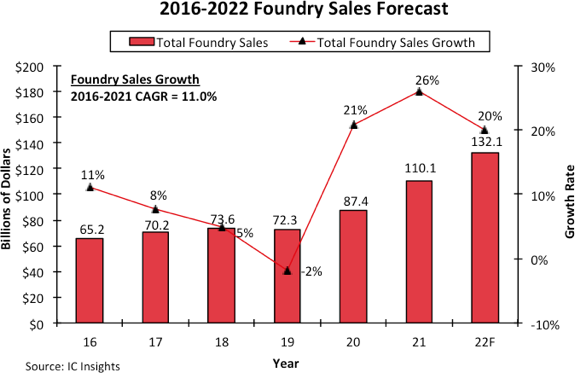
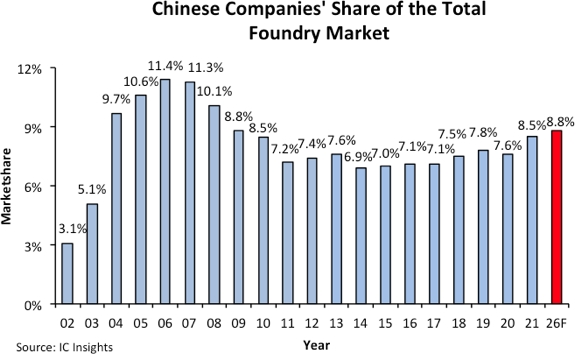
Apple has announced an all-new high-end CPU M1 Ultra. It is basically two M1 Max chips paired together, using a heretofore “hidden feature” of the Max: special die-to-die interconnection tech that lets 2 Max chips work together for all-new heights of power. Apple calls this interconnection technology “UltraFusion”, and it appears to be enabling Apple silicon to reach unprecedented levels of performance. The chip features 20-core CPU and 64-core GPU. Apple claims M1 Ultra delivers faster performance than the highest-end discrete GPUs (like the Nvidia GeForce RTX 3090) while using up to 200W less power.(My Drivers, Apple, Tom’s Guide, TechRadar)
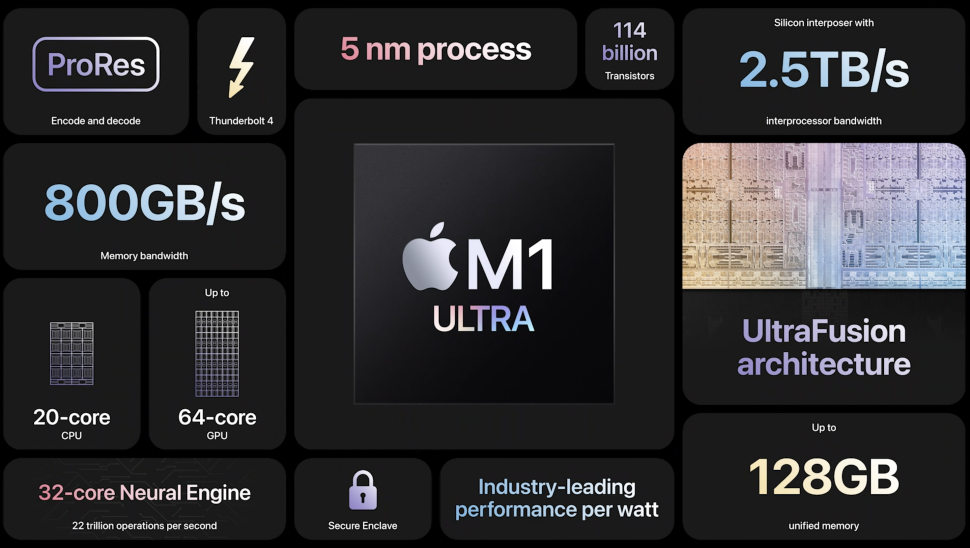
Samsung has indicated that GAA is a new type of gate-all-around transistor that uses nanosheet devices to create MBCFETs (Multi-Bridge-Channel FETs), which can significantly enhance transistor performance, mainly replacing FinFET transistor technology. According to Samsung, compared to the 7nm manufacturing process, the 3nm GAA technology has improved logic area efficiency by more than 45%, reduced power consumption by 50%, and improved performance by about 35% as compared to TSMC 3nm FinFET process. Samsung is already preparing to start construction of a 3nm wafer fab at its P3 factory in Pyeongtaek, South Korea, and will start construction in Jun / Jul 2022, and import equipment in time. According to this progress, the 3GAE process in 2022 should only be a small-scale trial production, and mass production will also be in 2023, which is similar to TSMC’s 3nm process. Both of them have delayed mass production of the 3nm process due to various problems. (My Drivers, CN Beta, The Elec)
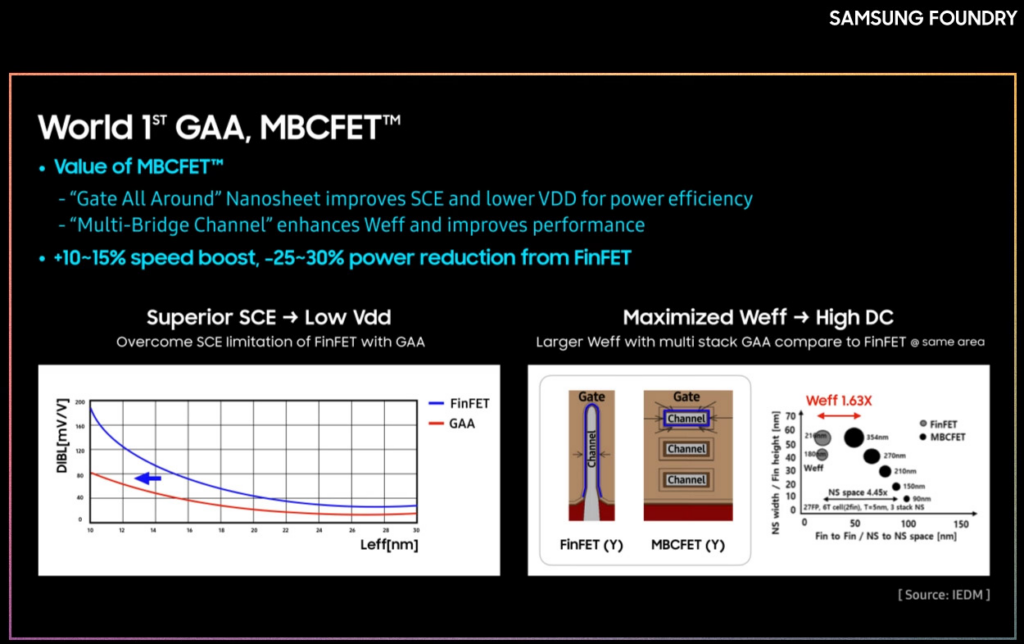
TSMC allegedly plans a 10-20% price hike for its 8” foundry services, with the new prices to be effective starting 3Q22. The price increase of TSMC, which occupies the largest foundry market share of the 8” process, will attract second-tier fabs to follow up. Under the tight global supply chain, semiconductor prices continue to rise. TSMC has adjusted prices several times in 2021. Even some chip prices have risen by 400% in one year.(Laoyaoba, My Drivers, Digitimes, Digitimes)
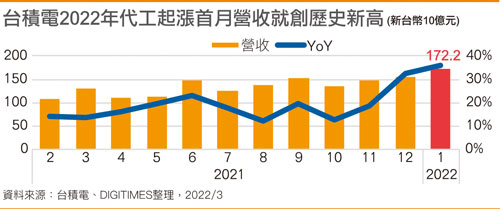

LG Display (LGD) is reportedly developing two models of OLED panels that it aiming to supply to Apple’s iPads launching in the future LG Display is developing 12.9” and 11” models. The company is the exclusive developer of the 12.9” model. Samsung Display is also working on developing its own version for the 11” model. Both Samsung Display and LG Display, for the time being, are planning to use their existing Gen 6 (1500 x 1850mm) OLED lines to manufacture these OLED panels for iPads. However, both companies are working on their respective Gen 8.5 (2200 x 2500mm) production technologies to accommodate larger substrates in the production of these panels, which will make it more cost-effective for them. (Laoyaoba, The Elec)
According to analyst Ross Young at Display Supply Chain Consultants, Apple in 2022 is likely to begin moving away from its notch to a design that incorporates both a pill-shaped hole for the Face ID sensors and a hole-punch for the front-facing camera. Apple will reportedly use the new design on its iPhone 14 Pro and iPhone 14 Pro Max models in 2022. The lower-tier iPhone 14, on the other hand, will continue to use the smaller notch design from the previous iPhone 13 lineup. In 2023, with the iPhone 15 series, DSCC expects Apple to adopt the pill-shape and hole-punch across all 4 models that year. (GSM Arena, DSCC, Apple Insider)
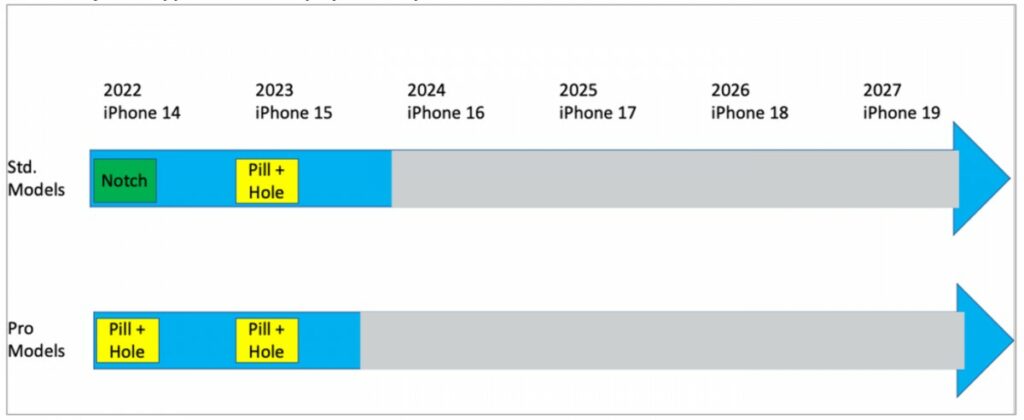
Innolux chairman and CEO Jim Hung has indicated that the TFT-LCD panel maker has no plans to set up new production lines (unlike fellow maker AU Optronics, which plans to set up a new Gen-8.5 plant). Innolux has signed a 12-year contract with mainland China-based SDP Global, which will supply the Gen 10.5-based supply from 2021 to 2033. LCD panels that replace glass substrates. It is reported that Innolux’s overall shipment area in 2021 will be 29.09M square meters, an annual increase of 1.82%; in terms of small and medium sizes, 2021’s shipments totaled 331M units, an increase of 13.4% compared with 292M units shipped in 2020.(Laoyaoba, Digitimes, China Times)

According to Omdia, Samsung’s LCD smartphone shipments surpassed the OLED smartphone shipments for 2021. Notably, the firm managed to ship 135.1M units of OLED smartphones and 135.8M units of LCD smartphones in 2021. When compares these numbers to 2020, it shows that OLED smartphone shipments decreased by 15%. LCD smartphone shipments, on the other hand, increased by 41%, which is a significant margin. The global shipment of OLED smartphones in 2021 increased 33.4% compared to a year prior. A total of 535M units were shipped in 2021, compared to 2020’s 480M units. OLED panels were used mostly in smartphones with price tags exceeding USD751.(Android Headlines, The Elec, The Elec, Sam Mobile)
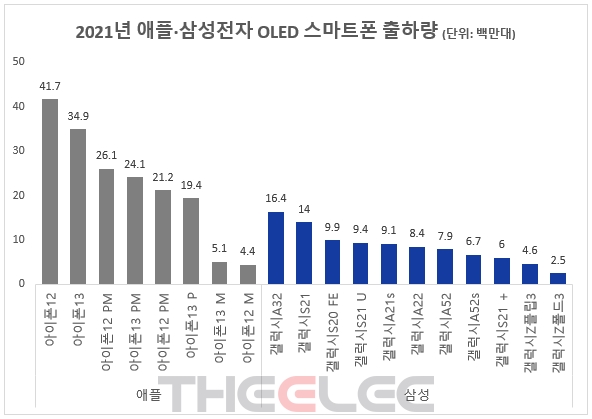
OPPO’s foldables smartphone Find N sales is better than expected because of its reasonable pricing. Under the good market response, OPPO is reportedly planning two more of foldable smartphones, one with a small vertical screen and one with large horizontal screen, which may be launched in order to meet the needs of different consumers. OPPO’s flagship foldable smartphone is priced at the mainstream flagship price, but it may launch a scrollable mobile phone that hits the high-end price of CNY10,000 in the future. (Android Headlines, Sohu)

vivo has 2 foldable smartphones that have been certified by the 3C authority in China, namely vivo X Note and X Fold. The certification itself confirms that 80W charging will be supported by both phones. One has a 5,000mAh battery, while the other includes a 4,000mAh battery.(Android Headlines, Weibo, UDN, IT Home)
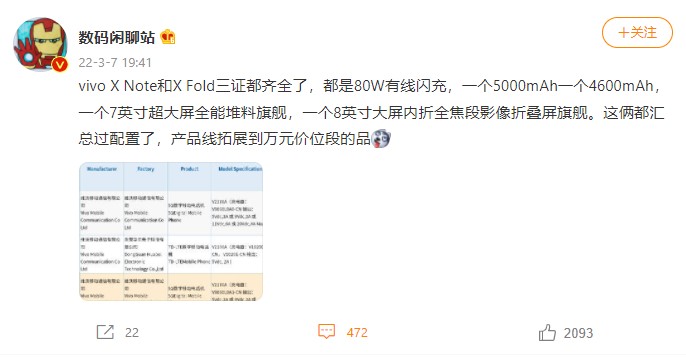
According to Omdia’s latest data, shipments of notebook panels equipped with mini LED backlights will reach 4.5M in 2021, a significant increase from 2020. The penetration rate of mini LED notebooks surged to 1.6% in 2021, and the market share exceeded 1% for the first time, thanks to Apple’s 14.2” and 16.2” mini LED MacBook models launched by the end of 2021. The current forecast for notebook panel shipments in 2022 is 300M; mini LED notebook panel shipments are expected to be 9.9M, with a penetration rate of 3%, reaching another peak in unit shipments and market share. (CN Beta, Sina, Huanqiu, CNYES)
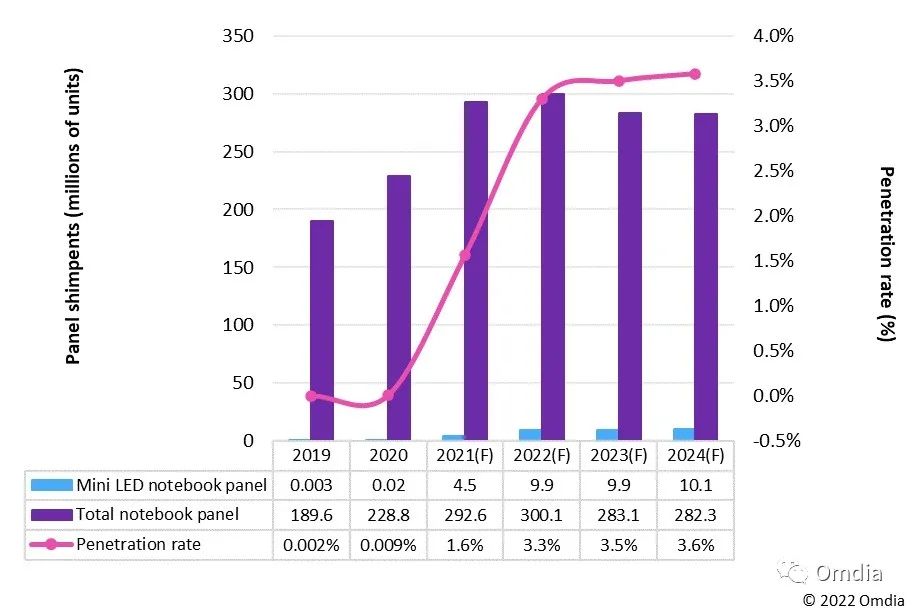
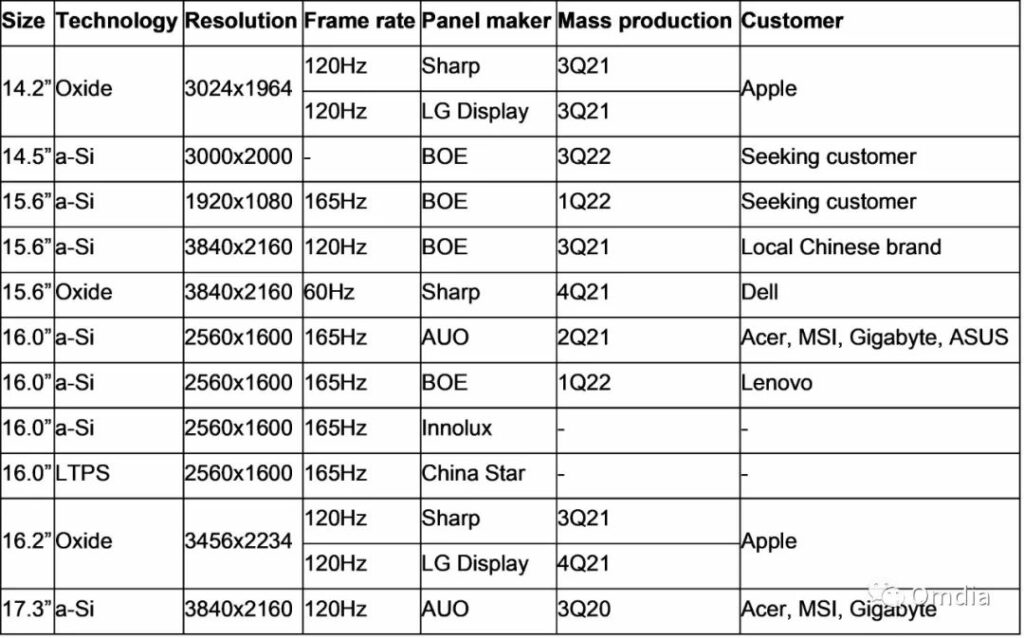

Samsung will reportedly not ship Galaxy A13 5G and Galaxy A03s with a charger inbox in the U.S. Samsung cautions users to use only official chargers and cables. While Samsung has yet to formally confirm the removal of in-box charging bricks for its affordable handsets, it appears that this will become the norm for future Galaxy A series smartphones. (Android Central, Phone Arena, Samsung)
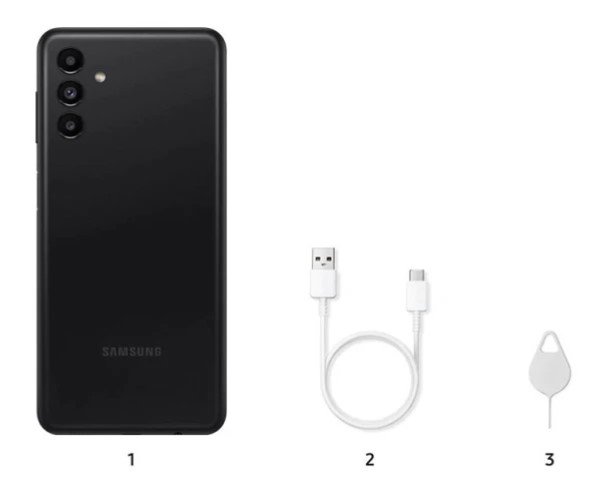
Gogoru has announced the world’s first solid-state lithium ceramic battery prototype for two-wheel battery swapping. Jointly developed by Gogoro and ProLogium Technology, a global leader in solid-state battery technology, the new Gogoro solid-state battery prototype integrates with Gogoro’s existing vehicles and swapping network. Gogoro estimates that its solid-state batteries will increase capacity of current lithium batteries by 140% or greater, from 1.7kWh to 2.5kWh.(Engadget, Gogoru)
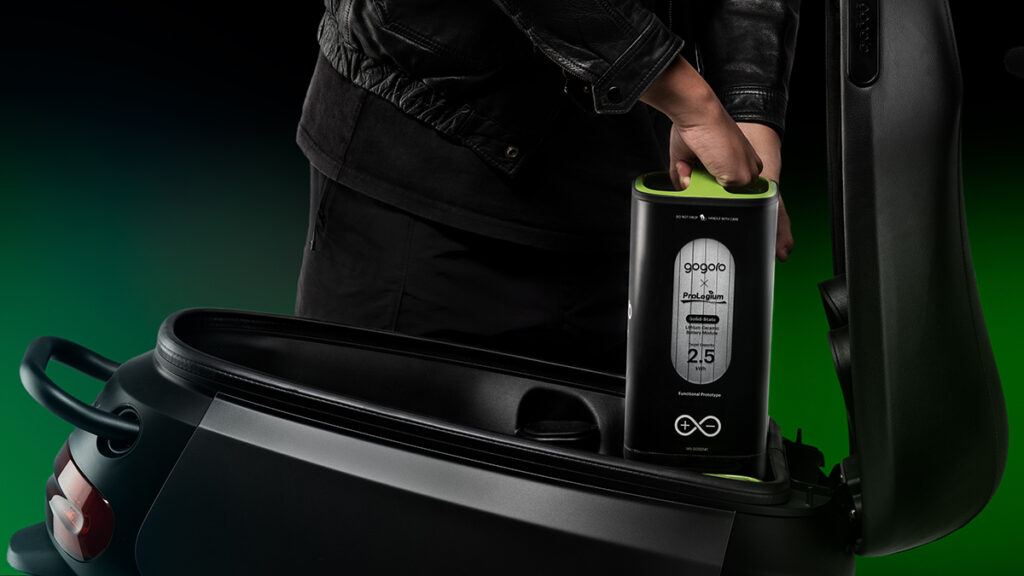

Samsung Electronics is widely expected to launch its entry-level Galaxy smartphones later in Mar 2022 in response to the release of Apple’s new iPhone SE. Samsung’s mid-low tier Galaxy A series is forecast to come in various new models — A73, A53, A33 and A23, a product line the company said would provide “cutting-edge innovations, services and features at an accessible price”. (Yonhap, GizChina, IT Home)
Worldwide smartphone sales grew 6% in 2021, according to Gartner. Smartphone sales rebounded in 1H21, following a 12.5% decline in 2020. Previous year’s lower smartphone sales because of COVID-19 and the bounce back to growth in 1H21 helped propel the market to growth. However, component shortages and supply chain issues disrupted smartphone sales in 2H21. The increase in discretionary spending, opening of marketplaces post lockdown, along with a lower base for comparison from 2020 led to 6% growth in 2021. The introduction of 5G at lower price points to meet future proof needs influenced upgrade purchases. (Gartner, CN Beta)
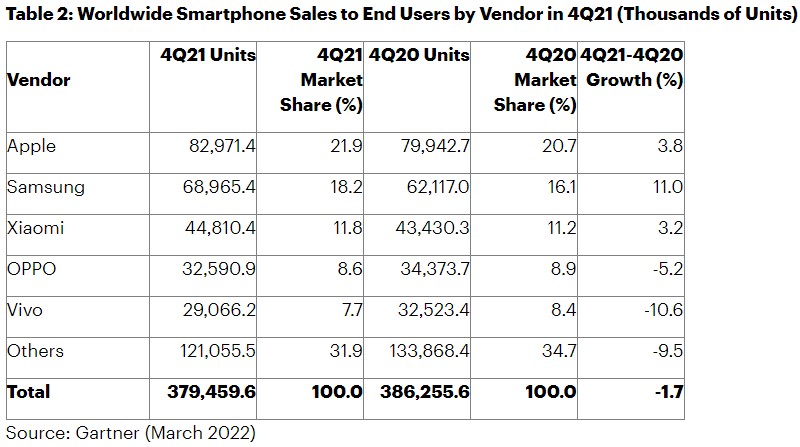
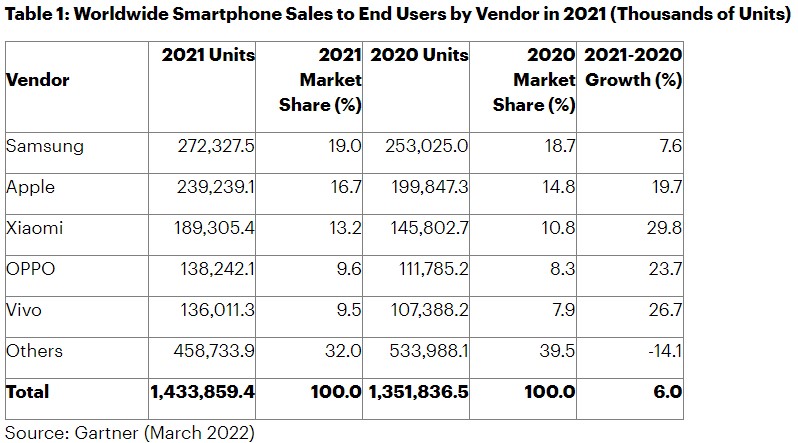
Apple iPhone SE (2022) is announced – 4.7” 750×1334 Retina IPS LCD, Apple A15 Bionic, rear 12MP OIS + front 7MP, 3GB RAM, 64 / 128 / 256GB storage, iOS 15.3, front fingerprint scanner, stereo speakers, li-ion battery with 18W fast charging, Qi wireless charging, IP67 rated, starting USD429. (Apple Insider, GSM Arena, Gizmo China)
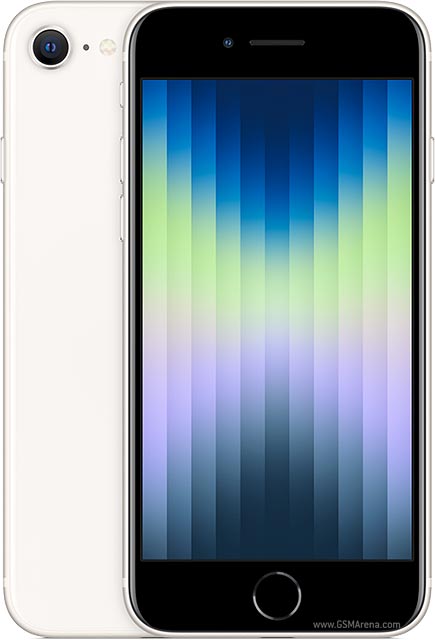
vivo Y01 is official in Kenya – 6.51” 720×1600 HD+ v-notch, MediaTek Helio P35, rear 8MP + front 5MP, 2+32 / 3+32GB, Android 11.0 Go, no fingerprint scanner, 5000mAh 10W, price yet unknown.(GSM Arena, Gizmo China, vivo, TechRadar)


Apple unveils fifth-gen iPad Air – 10.9” 1640×2360 Liquid Retina IPS LCD, Apple M1, rear 12MP + front 12MP, 8GB RAM, 64 / 256GB storage, iPad OS 15.3, stereo speakers, top mounted fingerprint, 28.6Wh battery, starts at USD599. (Apple Insider, GSM Arena)
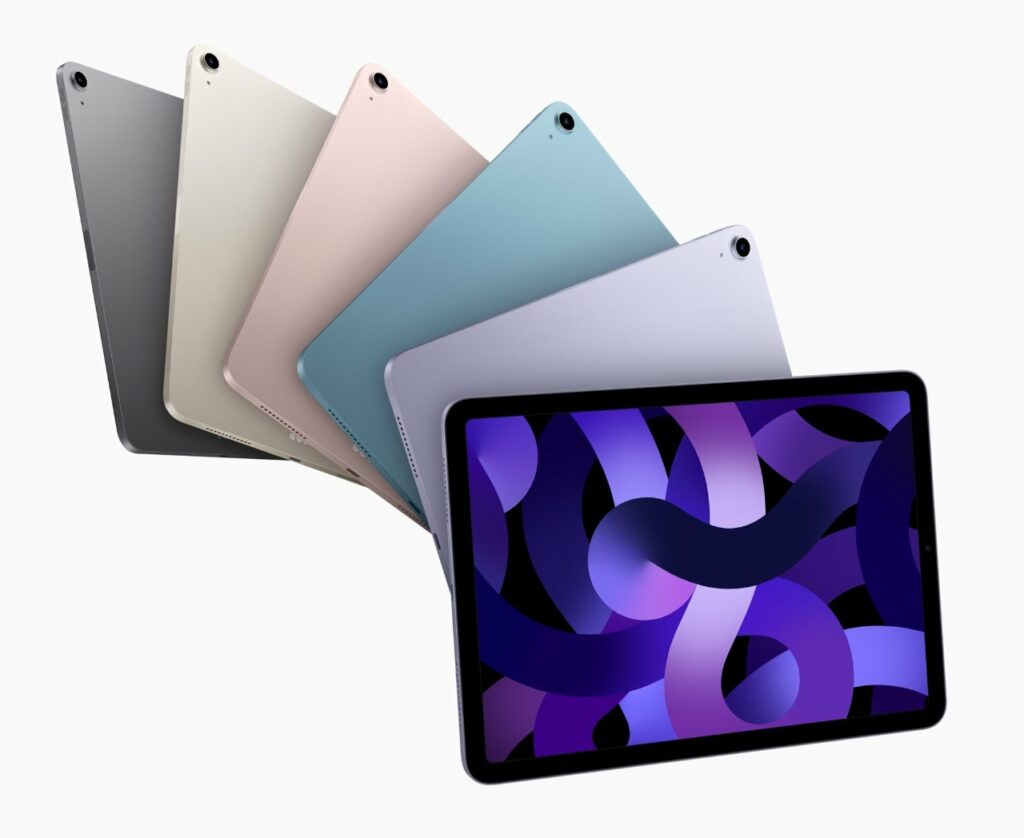
Apple unveils Mac Studio featuring Apple M1 Max / M1 Ultra, 32 / 64 / 128GB DRAM, 512GB-8TB SSD, macOS, starts from USD1,999. Apple also unveils Studio Display featuring 27” 5K Retina display, with over 14.7M pixels, offering 600 nits of brightness, P3 wide color as well as support for over 1B colors, priced at USD1,599.(Apple Insider, Apple, Android Headlines, TechCrunch, Tom’s Hardware)


Italy reportedly plans to subsidize up to EUR6,000 (USD6,570) of the purchase price of new electric vehicles as part of its plan to support the country’s automotive industry. The subsidy of up to EUR6,000 is subject to the purchase of new vehicles costing up to EUR35,000 and includes a EUR2,000 contribution linked to the scrappage of a polluting combustion-engine car. In addition to supporting the country’s auto industry, the Italian government is also vigorously promoting domestic chip manufacturing, with a recent draft decree showing that Italy plans to allocate more than EUR4B for chip manufacturing by 2030 to attract more investment. (Laoyaoba, US News, Reuters)

Nvidia is investing USD10M in Uber spinout Serve Robotics, funds the startup will use to further expand its sidewalk delivery robot service outside Los Angeles and San Francisco. The investment – Nvidia’s first in the sidewalk delivery space – is part of a long-term collaboration that will see the two companies work together toward advancing their own wheelhouses of robotic technology. (TechCrunch, Inside, CN Beta)

Amazon-owned robotaxi firm Zoox has announced that it has acquired Strio.AI, a robotics startup specializing in AI and automation for agriculture. Zoox will likely integrate Strio’s perception AI and other technology into its robotaxi plans. Strio.AI is among the robotics companies specializing in automation for produce picking and pruning. (TechCrunch, Zoox, Inside)
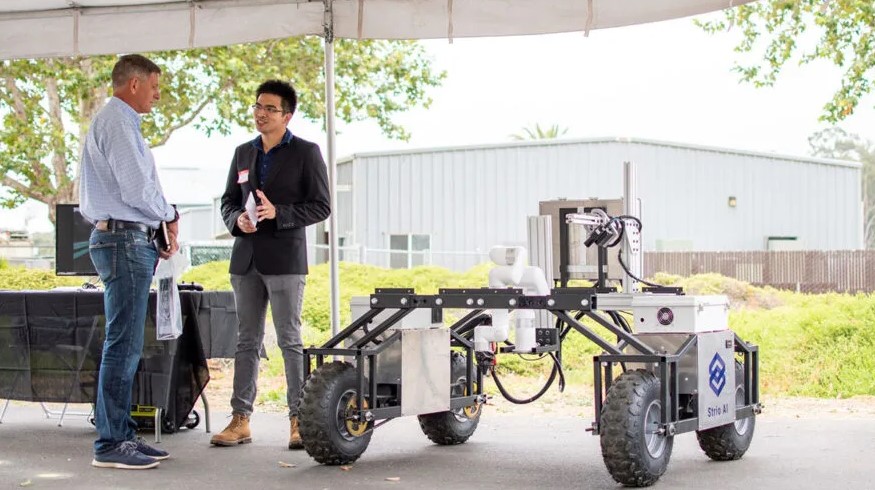
General Electric Research (GE Research) demonstrates an autonomous “pipe-worm” (Programmable Worm for Irregular Pipeline Exploration) robot that can demolish hard and solid waste deposits. This updated autonomous soft robot design represents a continuation of work funded through DARPA’s Underminer program to develop more advanced tunneling technologies as well as new sensing and operational solutions for monitoring and maintaining underground networks.(TechCrunch, GE)
